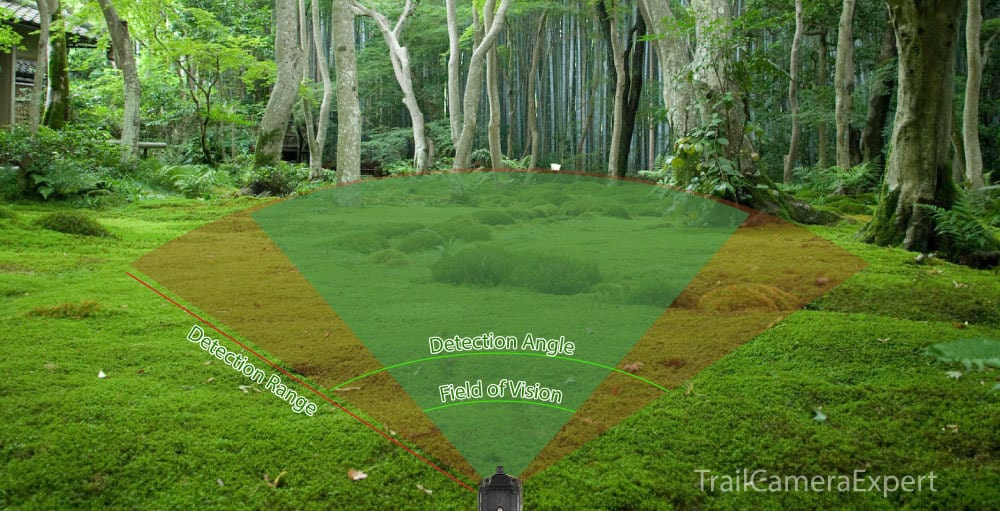How does a wildlife camera work?
To understand a wildlife camera with SIM card, it is useful to first explain how a wildlife camera works exactly. A regular wildlife camera without a SIM card automatically records images through a sensor that detects movement/heat and then sends a signal, causing the camera to 'fire'. The images are normally stored on the SD card of the wildlife camera.

As soon as an animal enters the green area (in this case with this device), the camera can detect it and a photo is taken.
What is a wildlife camera with SIM card?
A wildlife camera with SIM card works exactly the same as a standard wildlife camera. The only difference between these devices is that the wildlife camera with SIM card can send the photos and videos it records to a mobile or tablet (depending on where the app is installed). With a wildlife camera on a SIM card you can easily be informed live about where an animal/human is at that moment. This is also called active observation. With a standard wildlife camera it is more passive, and you can review the images at a later time. A wildlife camera with SIM card is also called a wildlife camera with 4G. This is because a physical SIM card really needs to be inserted into the device, just like with a mobile phone with 4G.
The advantages of a wildlife camera with SIM card
The biggest advantage of a wildlife camera with SIM card is that the applications are endless. For example, you can use the camera as a security camera (receive live notifications when someone walks past the camera), hunting camera (know live where a herd of animals are walking), observation camera, etc. Another major advantage is that the wildlife camera can often remain connected worldwide. Make sure you have an external power supply because if the camera dies it will be difficult to change the batteries remotely.
The disadvantages of a wildlife camera with SIM card
The disadvantages are mainly the costs, it simply costs money to send a photo or video. In general, the costs for a photo are between 0.2 and 0.5 euro cents. A video can quickly cost a few euro cents for 5-10 seconds. It is important that you do not hang the camera somewhere where, for example, a branch or leaf is constantly blowing in front of the sensors. Fortunately, a wildlife camera with a SIM card can be controlled via the app. In case of 'noise' you can set the sensors lower or temporarily turn off the camera.
How much does a wildlife camera with SIM card cost?
This depends on the purpose. The wildlife cameras with SIM card in the Netherlands and Belgium are usually priced between €279 and €400. Of course there are outliers, but a model that costs around €300 is often an excellent camera with clear images and powerful specifications.
Wildlife camera with fixed SIM card subscription
There are wildlife cameras that make it possible to send unlimited photos and videos for a fixed amount per month. This is often a good solution for the intensive user and the price quickly exceeds €50 per month.
Wildlife camera with prepaid SIM card
A wildlife camera with SIM card that works on a prepaid basis is often the best choice for the 'average user'. Because the photos often only cost a few cents to send and the cameras usually don't take photos all day long, this is the cheapest option for many. You also never pay more than you have made available as credit.
The APP of a wildlife camera
The APP of the wildlife camera with SIM card is different for each device. For example, the wildlife camera has its own APP in which all images come together. There are many other brands that each have their own and unique APP for their specific wildlife camera. In general we can say that a wildlife camera APP is free, you only pay for sending photos or videos, not for using the APP.
Which wildlife camera with SIM card is the best?
We have tested many cameras in our time in this industry, looking at price and quality, our choice and also our advice is the Seissiger 4G wildlife camera with super SIM. This is a prepaid device for a competitive price, ideal for starters and advanced users. See the images of this device below.
